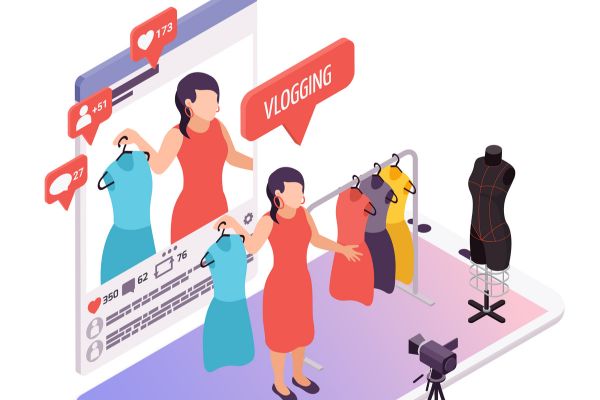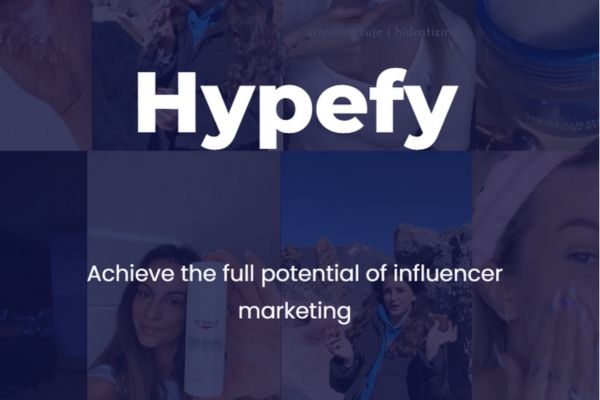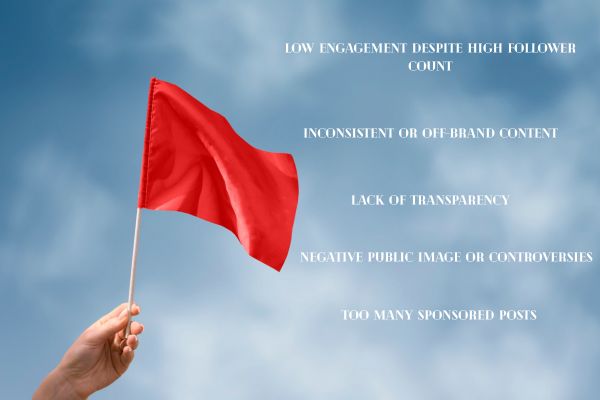Influencer marketing is one of the most effective ways for brands to reach and connect with their audiences. The right strategy can help you boost visibility, build trust, and drive real engagement.
If you’re wondering how to start influencer marketing, you’re not alone – many businesses are turning to creators and content influencers to amplify their message in an authentic and relatable way. Adding influencer marketing to your overall strategy can open the door to new audiences and help you stay competitive in an ever-evolving online landscape.

What is Influencer Marketing?
Influencer marketing is a type of social media marketing where brands collaborate with individuals – known as influencers – who have a dedicated following and influence within a specific niche. These influencers can range from well-known celebrities to everyday content creators who’ve built trust with their audience by sharing honest, engaging, and relatable content.
Instead of promoting products through traditional ads, influencer marketing allows brands to reach people more organically through recommendations, tutorials, reviews, or lifestyle content.
For example, Eucerin has partnered with skincare influencers to share personal skincare routines and product results, helping build credibility and trust. Philips has worked with tech and lifestyle creators to showcase innovative features of their products in real-life settings. Gymshark grew massively by teaming up with fitness influencers who genuinely used and loved their gear. Glossier, a beauty brand, built its community by encouraging micro-influencers and everyday users to share their beauty routines on Instagram.
Why does it work?
These collaborations work because they feel more like a trusted recommendation than a sales pitch – and in today’s market, that makes a big difference.
- Trust Factor: People buy from people, not corporations. A genuine endorsement from a credible influencer carries weight.
- Targeted Reach: Brands can connect with specific audiences (e.g., moms, fitness buffs, chronic illness patients) by choosing the right influencer.
- Engagement Boost: Influencer posts spark conversations, comments, and shares – way more than standard ads.
Influencer marketing isn’t just about sales – it’s about building relationships between brands, experts, and consumers. When authenticity and trust are prioritized, the right influencer partnerships can become powerful catalysts for growth and engagement.
Different Types of Influencers
When developing an influencer marketing strategy, it’s crucial to recognize that influencers vary significantly, particularly in terms of audience size. They’re typically categorized by follower count, with each tier offering distinct benefits and considerations.” Influencers are generally grouped into categories based on their follower count, and each type brings its own set of advantages and trade-offs. Let’s break it down:
1. Nano-Influencers (1K–10K followers)
Nano-influencers (1K–10K followers) may have smaller audiences but deliver powerful community connections.
Pros:
- High еngagement – Their smaller, tight-knit communities mean followers interact more (likes, comments, shares)
- Niche еxpertise – Often focuses on specialized areas (e.g., fitness, skincare, makeup, tech reviews, luxury travel, or minimalist home design)
- Affordable rates – Lower cost for collaborations, making them ideal for small businesses
Cons:
- Limited reach – A smaller audience means less brand exposure
- Less professional content – May have limited content quality or experience with brand deals
Best for: Small businesses, niche products, or local marketing efforts.
2. Micro-Influencers (10K–100K followers)
Micro-influencers (10K–100K followers) strike the perfect balance between reach and relatability, making them ideal for targeted campaigns.
Pros:
- Strong credibility – Seen as relatable yet knowledgeable – perfect for trustworthy health messaging
- Balanced reach & engagement – Bigger audience than nano-influencers but still maintains high interaction
- Specialized audiences – Often cultivate expertise in focused niches like sustainable fashion, cooking, budget travel hacking, and DIY home renovation.
Cons:
- Higher Costs – More expensive than nano-influencers
- Competition – Popular in their niche, so booking them may take planning
3. Macro-Influencers (100K–1M followers)
Macro-influencers (100K–1M followers) combine broad reach with niche credibility, offering brands amplified visibility while maintaining audience trust.
Pros:
- Broad reach – Can introduce your brand to a large, diverse audience
- Professional quality – High-production content (polished videos, photos)
- Industry recognition – Often verified or featured in media
Cons:
- Lower engagement rates – Followers may interact less than with smaller influencers
- Higher fees – Expensive partnerships, sometimes 5K–20K per post
- Less personal connection – May feel less “authentic” than micro-influencers
Best for: Campaigns that require significant exposure and strong content production (e.g. national retail launches, tech product reveals, luxury travel promotions, fashion brand collaborations, or beauty product line launches).
4. Mega-Influencers (1M+ followers)
Mega-influencers (1M+ followers) offer massive reach and star power, making them ideal for broad brand awareness campaigns.”
Pros:
- Massive exposure – Instant visibility to millions
- High-profile visibility
- Celebrity status – Can bring prestige and virality to campaigns
Cons:
- Very expensive – Costs can exceed $50K per post
- Lower engagement rates – Followers are more passive.
- May lack niche focus – Audience may be too broad for specific health messages
Best for: Big-budget campaigns, product launches, or brands looking to make a splash on a global scale.

Which type of influencer is right for you?
Understanding these categories can help you match your brand goals with the right type of influencer – whether you’re aiming for broad visibility or deep engagement in a specific niche.
- Want high engagement & affordability? → Nano/micro-influencers
- Need wide reach & professional content? → Macro-influencers
- Going viral with a big campaign? → Mega-influencers
What’s the Difference Between Influencers and Creators?
The terms influencer and creator are often used interchangeably, but they’re not exactly the same – and understanding the difference can help you build more effective campaigns.
Influencers are individuals who’ve built a loyal following and have the ability to influence their audience’s opinions, behaviors, or buying decisions. Their strength lies in the trust and connection they have with their community. Brands often work with influencers to tap into that trust and promote products in a more personal and authentic way.
Creators, on the other hand, focus primarily on making content – whether that’s videos, photography, blogs, or design. They may not always have a massive following, but their content is usually polished, professional, and visually engaging. Many creators are also influencers, but not all influencers are creators in the traditional sense.
In simple terms:
- Influencers = influence + audience connection
- Creators = strong content skills + visual storytelling
Some campaigns may benefit more from an influencer’s ability to drive engagement and trust, while others may need a creator’s eye for crafting high-quality visuals or videos. Ideally, you’ll find partners who are a bit of both – someone who can create compelling content and inspire action.
When to work with each?
Choose an Influencer if you need:
- Credibility: An industry-certified expert backing your product (e.g., a master sommelier for wine brands, a certified fitness trainer for athletic gear, or a veteran chef for kitchen appliances)
- Community engagement: Comments/DMs from followers about your service
- Conversions: Trackable link clicks or promo code usage
Example: A gourmet coffee brand collaborating with a certified barista influencer to demonstrate brewing techniques on TikTok.
Choose a Creator if you need:
- High-quality content: Professionally shot videos for your website/ads
- Educational material: An automotive engineer showing car accessories
- Brand storytelling: Documentary-style patient success stories
Example: A hiking gear company working with a wilderness survival expert to test products on YouTube
Some professionals blend both roles – like a professional chef who shares restaurant-industry expertise while creating viral cooking tutorials for home audiences. These hybrids are especially valuable for long-term partnerships.
Steps to Start Influencer Marketing
Getting started with influencer marketing doesn’t have to be overwhelming. With the right steps in place, you can create a strategy that aligns with your goals and builds real connections with your audience. Here’s a step-by-step breakdown to guide you through the process from planning to execution.
Step 1: Define Your Goals and Objectives
Before reaching out to any influencers, be clear about what you want to achieve. Are you looking to boost brand awareness, generate leads, drive traffic to your website, or increase sales?
Defining your goals early helps you choose the right influencers, content formats, and success metrics. Make sure these goals align with your overall marketing and business objectives so your efforts contribute to the bigger picture.
Step 2: Identify Your Target Audience
To run an effective campaign, you need to know who you’re trying to reach. Start by defining your ideal customer based on demographics like age, gender, location, and income, along with psychographics such as values, interests, and online behavior.
This will help you choose influencers whose audience matches yours, ensuring your message lands in front of the right people.
Step 3: Choose the Right Social Media Platforms
Not every platform is right for every brand. Instagram is popular for fashion, beauty, and lifestyle; TikTok works well for younger audiences and creative, short-form videos; YouTube is ideal for tutorials, product reviews, and long-form content.
Think about where your target audience spends time online and which platform best fits your product or service.
Step 4: Find Influencers for Your Campaign
Now that you know your goals and audience, it’s time to find the right influencers. You can use influencer marketing platforms like Hypefy, or search manually using hashtags and keywords on social media.
Look beyond follower count – check engagement rates, content style, audience demographics, and whether the influencer’s tone aligns with your brand. Authenticity and trust are key.
Further reading: Comprehensive Influencer Checklist for Effective Collaborations
Step 5: Develop a Content Strategy
Work closely with your chosen influencers to create content that feels natural, engaging, and valuable to their audience. Let them bring their creative voice into the process – it’s what their followers connect with.
Decide on formats ahead of time: Instagram posts, Stories, Reels, YouTube videos, blog posts, or even livestreams. A mix of formats can help extend reach and engagement.
Step 6: Set a Budget and Compensation Structure
Influencer marketing can be flexible in terms of cost, but it’s important to define your budget early. Some influencers work on paid partnerships, while others may accept free products, services, or affiliate commissions.
Choose a compensation model that works for both parties and reflects the scope of work and expected results.
Pricing factors:
- Influencer tier (nano vs. mega)
- Content type (single post vs. campaign)
- Usage rights (can you repurpose their content?)
Compensation models:
- Flat fee (common for one-off posts)
- Free products/services (ideal for nano/micro-influencers)
- Affiliate commissions (pay per sale/conversion)
Step 7: Outreach and Build Relationships
When reaching out to influencers, avoid generic messages. Take the time to personalize your outreach – mention something specific you like about their content or explain why you think they’re a great fit for your brand.
A genuine, relationship-first approach leads to better collaboration and often better results in the long run.
Step 8: Monitor and Measure Campaign Performance
Once your campaign is live, track key metrics such as reach, engagement (likes, comments, shares), website traffic, and conversions. Use tools like Google Analytics, UTM parameters, or social media insights to understand what’s working.
Review performance against your initial goals, and use those insights to refine your approach for future campaigns.

Types of Influencer Marketing Campaigns
There’s no one-size-fits-all when it comes to influencer marketing. The type of campaign you choose should match your goals, audience, and budget. Here are some of the most popular influencer marketing formats that brands use to engage their audience and drive results:
1. Sponsored Posts
This is one of the most common campaign types. A brand pays an influencer to create and share content featuring a product or service. These posts usually include a caption, image, or video along with a brand mention or hashtag. Sponsored content helps increase brand visibility and can influence purchasing decisions – especially when done authentically.
- What it is: Paid content where influencers feature your product/service organically in their feed, Stories, or Reels.
- Best for: Brand awareness, product launches
- Healthcare example: A dermatologist posting about a medical-grade sunscreen with a “swipe-up” link.
- Pro tip: Require #ad or #sponsored disclaimers to comply with FTC guidelines.
2. Giveaways and Contests
Partnering with influencers to run a giveaway or contest is a great way to boost engagement and grow your following. Influencers ask their audience to like, comment, tag friends, or follow a brand account for a chance to win a prize. This format encourages interaction and can quickly expand your reach.
- What it is: Collaborative promotions where followers enter to win your product/service by engaging (liking, tagging friends, following your brand).
- Best for: Rapid audience growth, lead generation
- Example: A tech influencer hosting a “Gaming Bundle” giveaway with your keyboard brand.
- Watch out: Ensure prizes comply with platform rules and local contest laws (e.g., no auto-subscription traps or prohibited items).
3. Affiliate Marketing
In this model, influencers earn a commission for every sale they drive through a unique referral link or discount code. It’s a performance-based approach that works well for e-commerce brands. Affiliate marketing campaigns can be cost-effective since payment is based on actual results, not just exposure.
- What it is: Influencers earn a commission (via unique links/codes) for driving sales or sign-ups.
- Best for: Performance-based campaigns, e-commerce health brands
- Example: A fitness influencer sharing a 15% off code for your activewear line.
- Key Metric: Track conversion rates to assess ROI.
4. Takeovers and Collaborations
An influencer “takes over” a brand’s social media account for a day or a specific campaign, sharing behind-the-scenes content, tutorials, or live Q&As. This gives followers a fresh perspective and creates buzz around the brand. Collaborations can also include co-branded content, product lines, or events.
- What it is: An influencer temporarily “takes over” your brand’s account (or vice versa) to showcase expertise.
- Best for: Humanizing brands, cross-promotion.
- Example: An adventure blogger controlling your hotel’s TikTok for resort tours.
- Bonus: Live takeovers boost real-time engagement.
Top Influencer Marketing Tools
Running a successful influencer marketing campaign involves more than just finding someone with a large following. The right tools can help you streamline everything – from discovering influencers and managing relationships to tracking campaign performance. Here are some top influencer marketing tools worth exploring:
1. Hypefy – Hypefy provides tracking and comprehensive reporting features, giving you actionable insights for ongoing and future campaign optimization. You can simplify, optimize, and succeed with campaigns that deliver results – without the manual grind. They help B2C marketing leaders simplify influencer campaigns and get consistent results using AI and automation.
2. Aspire (formerly AspireIQ) – Aspire is a popular platform for managing influencer relationships from start to finish. It allows you to discover creators, automate outreach, collaborate on content, and measure performance all in one place.
3. Upfluence – Upfluence offers a robust influencer search engine with filters for niche, location, engagement rate, and more. It also includes tools for campaign management, performance tracking, and even affiliate programs.
4. CreatorIQ – Ideal for large brands and agencies, CreatorIQ is an enterprise-level platform with advanced data analytics and influencer relationship management. It integrates well with major social platforms and offers customizable reporting features.
5. Heepsy – Heepsy is a user-friendly tool for discovering influencers based on follower count, location, and engagement metrics. It’s great for small to mid-sized businesses looking to identify niche creators efficiently.
6. HypeAuditor – Focused on data transparency, HypeAuditor provides deep insights into influencer authenticity, audience quality, and potential reach. It’s especially useful for vetting influencers before partnering with them.
7. GRIN – GRIN is designed for e-commerce brands and integrates with platforms like Shopify. It supports influencer discovery, relationship management, and campaign reporting – all within a clean, intuitive dashboard.
These tools can save time, improve decision-making, and help you get the most out of your influencer marketing investment – especially as your campaigns grow in scale and complexity.

Influencer Marketing Do’s and Don’ts
To get the most out of your influencer marketing efforts, it’s important to know what works – and what to avoid. Here are some key do’s and don’ts to keep your campaigns effective, authentic, and aligned with your brand goals.
Do’s
1. Do prioritize authenticity
Work with influencers who genuinely align with your brand values. Authentic recommendations are more likely to resonate with audiences and drive meaningful engagement.
2. Do set clear expectations
Make sure both you and the influencer are on the same page when it comes to deliverables, timelines, messaging, and goals. A detailed brief helps keep everything running smoothly.
3. Do measure performance
Track metrics like engagement, reach, clicks, and conversions to understand what’s working – and what can be improved for future campaigns.
4. Do stay compliant
Ensure influencers disclose partnerships with hashtags like #ad or #sponsored. It’s not just best practice – it’s required by advertising guidelines in many countries.
Don’ts
1. Don’t focus only on follower count
Bigger isn’t always better. Sometimes micro- or nano-influencers deliver stronger results thanks to higher engagement and a more niche audience.
2. Don’t micromanage content
Give influencers creative freedom. Their audience follows them for their unique voice and style – so let them tell your brand story in a way that feels natural.
3. Don’t ignore audience feedback
Pay attention to how followers respond to the campaign. Comments and reactions can offer valuable insights and help refine your approach.
4. Don’t rush the relationship
Effective influencer partnerships are built over time. Invest in long-term relationships instead of one-off promotions whenever possible.
Sticking to these do’s and don’ts will help you build stronger influencer collaborations and more successful campaigns in the long run.
Influencer Red Flags
Not all influencers are the right fit for your brand – and some might even hurt your campaign if you’re not careful. Before committing to a partnership, watch out for these common red flags that could signal potential issues.
Low Engagement Despite High Follower Count
A large following doesn’t guarantee influence. If an influencer has thousands (or millions) of followers but very few likes, comments, or shares, it could be a sign of fake followers or a disengaged audience.
Inconsistent or Off-Brand Content
If their content style, tone, or values don’t align with your brand, the partnership could feel forced or confusing to their audience. Look for consistency and relevance in their past posts.
Lack of Transparency
Influencers should clearly disclose sponsored content. If they don’t follow proper disclosure practices (like using #ad or #sponsored), it could put your brand at legal risk and harm credibility.
Negative Public Image or Controversies
Do a quick background check. If the influencer has been involved in scandals, offensive behavior, or frequent public backlash, partnering with them could lead to unwanted attention for your brand.
Too Many Sponsored Posts
If every other post is an ad, the influencer may be seen as inauthentic or overly commercial. A saturated feed can dilute the impact of your message and reduce trust among followers.
Being aware of these red flags can help you avoid costly mistakes and ensure your influencer partnerships are built on trust, relevance, and shared values.

Key Takeaways
Influencer marketing has become a key part of modern digital strategy – and for good reason. It offers a powerful way to connect with your audience through authentic, relatable content and trusted voices they already follow. Whether you’re aiming to build brand awareness, drive engagement, or boost conversions, influencer marketing can deliver measurable results when done right.
By understanding how to start influencer marketing, setting clear goals, choosing the right influencers, and tracking your results, you can create campaigns that not only reach the right people but also inspire action. Just remember – successful influencer marketing is built on trust, creativity, and long-term relationships.
Take the time to plan, test, and optimize your approach – and you’ll be well on your way to building meaningful, high-impact collaborations.Ready to get started? Start by defining your goals, finding the right voices, and building genuine partnerships that move the needle. The right influencers are out there – go find them and make your brand story shine!



